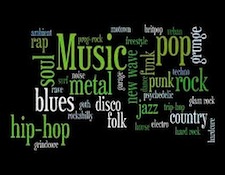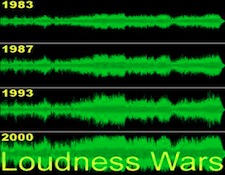It’s the time of year for saving money!

Audiophiles bewail the sound quality of contemporary recordings
on a regular basis. Low-resolution MP3s and “the loudness wars” are, if you read
posts on the Internet, the scourge of the earth. My question is simple – are some
musical genres more guilty of egregious violations of sonic sanctity than
others?
Obviously, music has to achieve a minimum level of
decipherability in order to qualify as music to begin with. But once you can
make out that you are listening to music as opposed to white or pink noise,
what else is needed to connect with listeners? Depending on the genre, the most
important “musical” qualities will be different. For dance, club, R&B, and
Techno, the beat is the thing, and the beat comes largely from the bass
regions. So for dance music, if there’s no bass, there’s no music. And some
modern music has a lot of bass, take the latest Daft Punk album for instance –
tons of synthesized bass, detailed, well recorded synthesized bass.

You would think that dynamic contrast would also be important
in modern pop and dance music, but that’s where many pop albums fall prey to the
evils of dynamic compression. Sometime in the recent past, some influential pop
producers decided that soft passages needed to be louder for radio play. Some
of these producers had big hits and soon others adopted this scheme. Most times
a “club mix” and a “radio mix” are identical, but sometimes, especially on the
vinyl copies for club DJs, the dynamic range of the club mix will be much
wider.
In my experience the genre that has the wildest swings from
fabulous to flabbergasting bad is in country music. On one extreme you have
pristine recordings from Allison Krause and Dierks Bentley, on the other you
have the top-40 country cannon-fodder heard on the radio with a dynamic range
of maybe 8 dB between loudest and softest passages.
While classical music rarely suffers from compression like pop,
it seems to have its own unique set of sonic foibles. Far too many classical
albums have what I call “the velvet fog.” Instead of accuracy, engineers have
tried to get the perfect orchestra sound, which may have as little toehold in
reality as the latest dance track.
On bluegrass albums, especially from smaller regional labels,
the usual sonic problem is the opposite of classical music – too little sweetening.
Some voices and instruments need a little distance, real or artificial between
them and their listeners, to sound their best.

So, where am I going with this? Every musical genre has some
aspects of their music that require the recording quality to be decent, if not
good, for them to connect with their audiences. And while we older listeners
would like to lay the blame at the feet of newer musical genres, that would be a
gross oversimplification of the problem.
As has been proven many times, good recordings are possible in
any and every musical genre if a recording engineer has the skill and is given
time to do a recording properly. And while particular details and methodology
of what goes into making a “proper” recording vary drastically by genre, it
always comes down to an engineer’s ears and their free will. Unfortunately,
sometimes, recording engineers and producers have neither.





